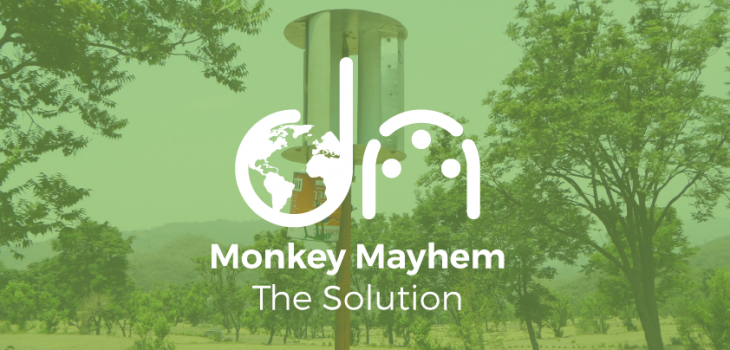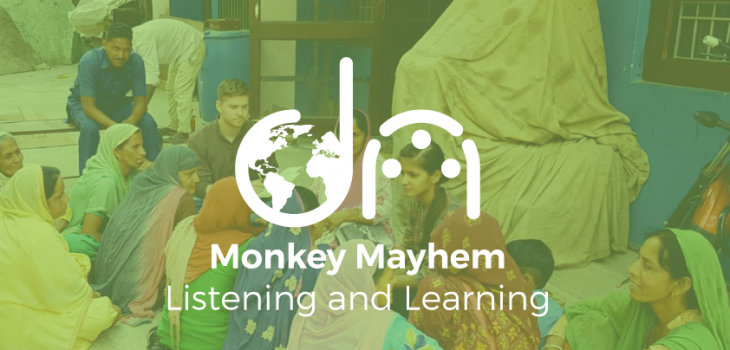 Blog
Blog
 Blog
Blog
 Blog
Blog
15th November 2019 - Design for Need, Project, Monkey Mayhem, Design Process
By Finn Brownbill and Matt McClumpha
In this blog we’ll be discussing the journey we took to collaboratively solve the problem for ‘Monkey Mayhem’. Every design process is different depending on the context of the project, so we won’t go into the intricacies of every single step we took, instead we’ll be highlighting some of the most important steps we took in the design process. This will be our final blog on the ‘Monkey Mayhem’ project so make sure to check out our first blog if you haven’t already.
 Blog
Blog
18th September 2019 - Design for Need, Project, Monkey Mayhem, Solution
By Finn Brownbill and Matt McClumpha
Through learning and listening to a variety of people (see our previous blog), it was evident that the problem was far greater than anticipated. With deforestation, over grazing and forest fires being the main sources of the problem, it was hard not address these issues in the solution. The original brief was to ‘design and implement a device which would protect a variety of crops from wildlife ensuring it is non-harmful, active 24/7 and works with wildlife rather than against it’. However this was later changed not only to include a device but a solution which would also target the source of the problem. With this in mind and the help from the community and RUCHI, a local solution was developed which would be low cost, sustainable and long-lasting.
 Blog
Blog
19th August 2019 - Design for Need, Project, Monkey Mayhem, Listening and Learning
By Finn Brownbill and Matt McClumpha
Upon arriving in Himachal Pradesh, it was evident that the problem was far greater than anticipated. We were shocked to find out that the local farmers with little other alternative, had resorted to poisoning monkeys in the area, killing many of them. Talking with a variety of people it was clear that most felt angry and frustrated towards the monkeys, although they do not like resorting to poisoning the monkeys, they have no other alternative. One farmer even stated that they will kill any monkeys that remain in the village, showing how extreme the problem has become.
 Blog
Blog
19th July 2019 - Design for Need, Project, Monkey Mayhem, Introduction
By Finn Brownbill and Matt McClumpha
Situated between hot plains and the Himalayas in Northern India, lies the Himachal Pradesh State. This region encompasses 100s of villages and farmland spread across its spectacular, rugged mountainous terrain. Summers reach scorching hot temperatures, partnered with a monsoon season of which approximately 70% of the yearly rainfall is received during this time (June to August). Life across this region can come with many challenges, with members of the community battling against poor agriculture, deforestation, a lack irrigation and clean drinking water. There are also many socio-economic problems such as, gender inequality and a lack of health care and education. By means of collective participatory action, over the last 40 years the communities across the region have worked on improving these problems in partnership with the RUCHI organisation.
 Blog
Blog
18th March 2017 - Design for Need , Social Design Tips
By Matt McClumpha
Whether you are designing the latest perpetual motion lighting or environmentally friendly clothing; here are Design for Need’s 5 social design tips we have taken from our own experience that could help you. If you are unsure of what social design is or would like to know more, please check out our previous article: ‘What is Social Design?’.
 Blog
Blog
21st December 2017 - Design for Need , Humanitarian Heroes, #HHotW
By Finn Brownbill
The Justice League? The Avengers? No much better. This group of individuals are the REAL superheroes making the world a better place today. Here at Design for Need we recognise the importance of these Humanitarian Heroes whose work often goes under the radar of the selective media. We want to bring attention to those who deserve it in the world of international development.
 Blog
Blog
13th November 2017 - Design for Need , Humanitarian Heroes, #HHotW
By Finn Brownbill
A few months ago, after reading headline after headline of doom and gloom we tweeted this:
 Blog
Blog
2nd November 2017 - Design for Need, Puzzle
By Matt McClumpha
Hello and welcome back to our final puzzle of the series! But don’t worry we’ll be back soon with some fun content for you. This week is one of the hardest puzzles yet (admittedly the easiest to draw though). Can you find out what the code is to open the door? Good luck!
 Blog
Blog
30th October 2017 - Design for Need , Social Design, Projects
By Finn Brownbill
Fortunately, despite the doom and gloom of the majority of the headlines in the news, there is so much innovative and caring work being done all over the world to improve the lives of those in poverty. In our 5 Inspiring Social Designs article, we introduced you to a range of inventions which did achieved precisely this. However, there were plenty more we wanted to bring to your attention, which we simply could not fit into one article. Therefore, here we are again, with yet another article introducing you to ‘5 More Inspiring Social Designs’. Enjoy!
 Blog
Blog
23rd October 2017 - Design for Need, Social Design, Environmental Conservation
By Finn Brownbill and Matt McClumpha
With a scroll and click you have made it to the end of Design for Need’s Social Design trinity series, finishing on this very ‘Environmental Conservation’ article. If you haven’t already checked out our other two areas of expertise, you can do so here: ‘WASH’ and ‘Agriculture’. They are worth it, I promise. When Design for Need was originally taking shape our attention was quickly drawn towards ‘WASH’ and ‘Agriculture’, because as established fields of International Development they both compile a vast array of problems which we believe, to this day, social design can fix. Environmental Conservation is somewhat different, at least it is in regard to Social Design. In fact the umbrella term of Environmental Conservation can be incorporated into many different fields of Social Design, including WASH and Agriculture, but also transportation, energy, housing and much more. We consider it to be a crucial and obligatory bond to every social design that is to be made, by ourselves and by others. Our personal definition of Environmental Conservation is this: “The preservation and protection of the natural world we know and love (including humans, wildlife and the environment), thereby ensuring that all work undertaken does not compromise the ability of the future generations to meet their own needs, creating sustainable future for all, at the expense of no one!”. Not quite a ‘Oxford Dictionary’ standard definition, but we like it.